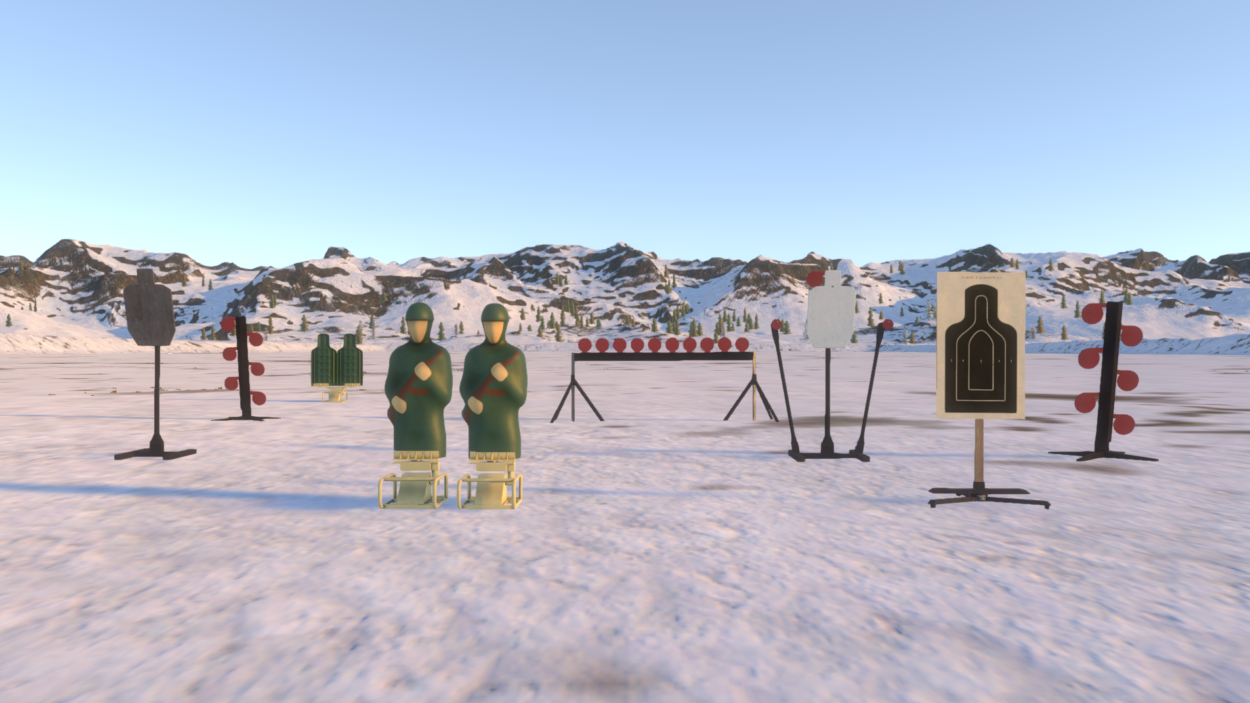
There is no question that VirTra’s Marksmanship Authoring program is an amazing tool. With marksmanship authoring you can pre-program an entire course of fire with turning targets that expose themselves for select periods of time at pre-designated distances. You can virtually author your entire department’s firearms qualification course into your system to help struggling shooters get their reps in before range qualifications. It’s truly a great tool.
Recently, during an Advanced Trainer Certification Course (ATCC) at our HQ in Tempe I found that many of our clients are not using the free-range portion of our marksmanship program to its fullest potential. As firearms instructor myself, I find our free-range feature to be incredibly functional as a skill builder.
At the last ATCC I had an individual approach me to ask how to counter the argument that simulator training can’t replace live fire. While I can’t counter that argument, I can wholeheartedly endorse the use of our marksmanship package as a supplement to live fire training. Let’s take a minute to discuss the fundamentals of marksmanship.
Stance – Simply put, stance is your foundation starting from the feet up. Just as you wouldn’t want a house built on a weak foundation you can’t shoot well from an unstable platform. Gone are the days of the “Weaver Stance” (I’m old enough to remember that) and current modern law enforcement techniques are teaching a more modern modified isosceles stance with body armor facing the threat in an athletic stance with weight evenly distributed on the balls of your feet to allow for mobility.
Grip – Grip is the manner in which your hands interface with the weapon. Terms like “strong hand” and “support hand” signify which hand you use to manipulate the trigger. Building a proper grip with the principles of leverage, friction, and pressure will enable shooters to manipulate the trigger with an isolated trigger finger allowing for faster more accurate shots.
Sight Alignment – We have all been taught clear front sight placed between the rear sight notch, flush across the top with equal space between each side of the notch and front sight (equal height/equal light). That’s sight picture, but with the advent of pistol mounted red dot sights we need to be open to more modern tools and techniques. (Coming soon… VirTra’s Red Dot Transition and Sustainment program).
Sight picture – This is simply where we place that perfect sight alignment that we discussed above on our target.
Trigger Control – Probably the most important fundamental in marksmanship, trigger control is proper manipulation of the trigger without disturbing your sights. I would go so far as to say that many problems that I’ve solved for problem shooters took place within their trigger guards.
Follow Through – This is a multi-faceted principle. Follow through is a process by which we reset the trigger during recoil and re-place our sight picture on our target. Commonly shortened to reset on recoil, we are setting ourselves up for follow up shots should they be required.
Now back to the VirTra free range function. Completely different from the Marksmanship authoring function, our system provides any number of ranges with or without backstops. Depending on the training objective that you want, you have the option to have a virtual “square range” in your training venue. One of the staples of firearms training is drills.
Once your cadre has established the drills that they want to accomplish, it’s as simple as selecting a free fire range and using the “target management” button to place your targets wherever you need them, just as you would on a square range. There are a number of targets to choose from and there is no limit to the number of targets you can place in your virtual square range. The target “offset” button can used for lateral movement and the “distance” button is used to place your target at various ranges within your virtual space. Quite literally one of the more valuable tools for teaching students’ proper fundamentals without the need for authoring an entire course of fire. Once fundamentals have been mastered instructors have the option to introduce time standards for the drill by selecting our pro timer.
While nothing can replace live fire, our system is equipped with options that enable firearms instructors to analyze their shooters performance close up and personal, without the normal concerns associated with live fire range practice for pennies on the dollar. Students are likely to feel more comfortable with simulator guns and may be more susceptible to trying new techniques if they aren’t worried about having a negligent discharge and damaging property or hurting themselves or others. There is no need for eye and ear protection so students can clearly hear tips or techniques and the recoil from our recoil kits is substantial enough to give the shooter feedback about their recoil management. Finally, of course, is the advantage of not having to brass-up at the end of the training day.
Feel free to reach out and speak with any of the VirTra SMEs for questions or advice on how to set up your free fire range if you have any questions and as always…
Stay Safe and Train Hard.
This article was written by Mike Clark, VirTra Law Enforcement Subject Matter Expert
Recently Published
Join Our Newsletter







